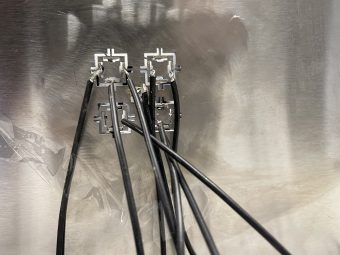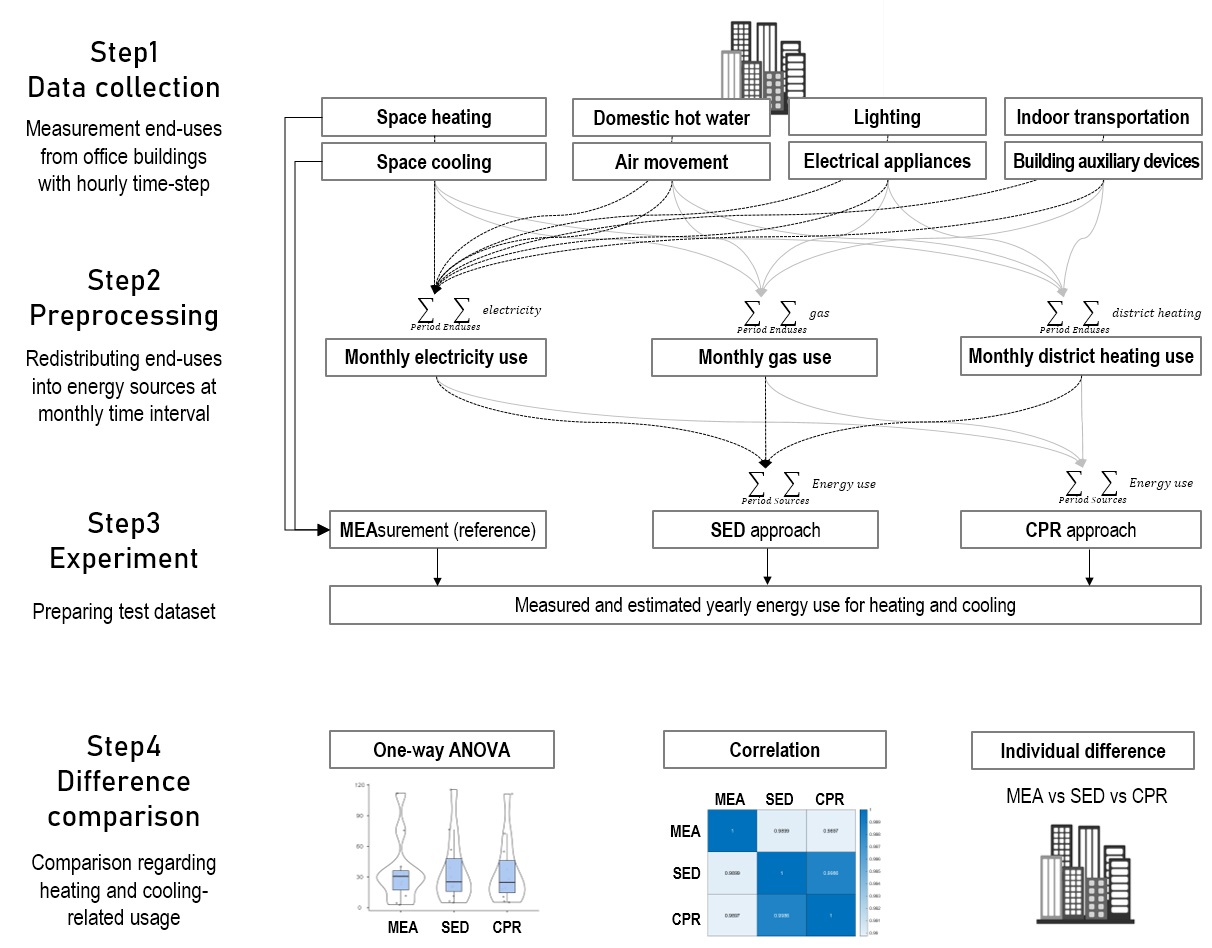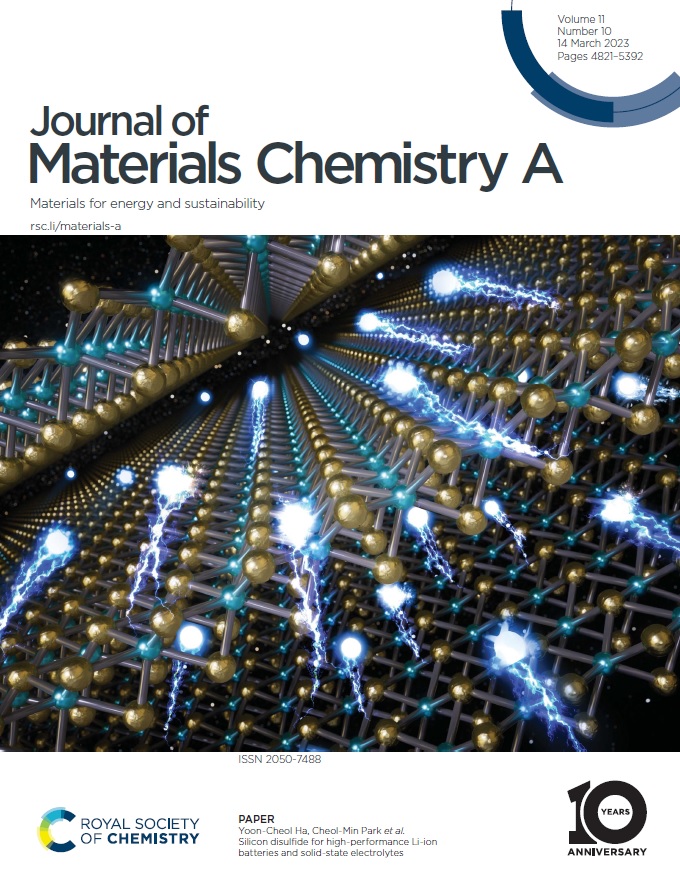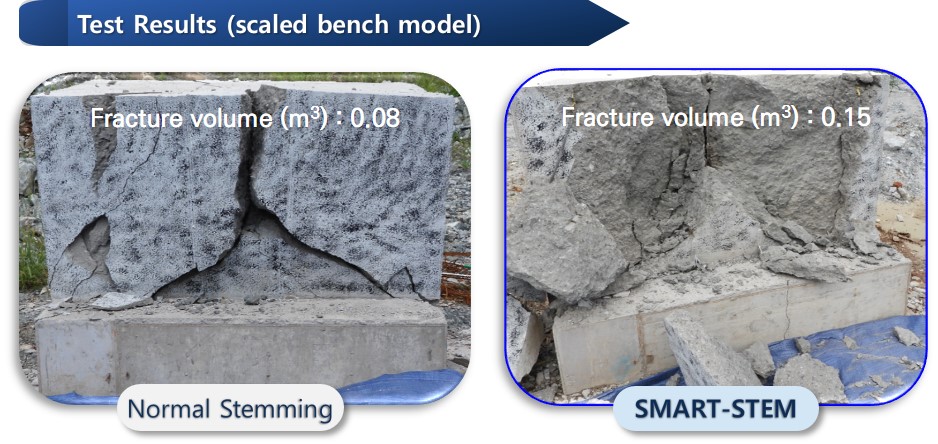Researchers at the Korea Institute of Civil Engineering and Building Technology (KICT) have developed a system that can forecast flash floods one hour in advance.
Tag: Applied sciences and engineering
Large-scale (4-inch) plasma etching technology for mass production of next-generation two-dimensional semiconductors has been developed for the first time in the world
The joint research team led by Hyeong-U Kim, Senior Researcher of the Department of Plasma Engineering at the Korea Institute of Machinery and Materials(KIMM) and Professor Taesung Kim of Sungkyunkwan University, announced that the team has succeeded in developing the “Large-scale (4-inch) atomic layer etching technology for MoS₂,a next-generation semiconductor, using plasma-based reactive ion etcher (RIE) equipment.”
KIMS redefined the role of the current collector!
A research team led by Dr. Ji-Hoon Lee of the Department of Hydrogen Energy Material at the Korea Institute of Materials Science (KIMS) developed a three-dimensional porous carbon-based current collector material and applied it to secondary batteries and supercapacitors to improve energy density and lifespan at the same time with Prof.
Optimized combination to enable low-cost mass production of solid electrolytes for all-solid-state batteries
Korea Electrotechnology Research Institute (KERI), a pioneering research institute for all-solid-state (sulfide-based) batteries that are free of fire and explosion hazards, has recently developed a novel technology that could pave the way for mass production of low-cost solid electrolytes.
Removing Barriers to Commercialization of Magnesium Secondary Batteries
The Korea Advanced Institute of Science and Technology(KIST) has developed a chemical activation strategy of magnesium metal that enables efficient operation of magnesium batteries in common electrolytes that are free of corrosive additives and can be mass-produced.
KIMM takes the lead in supporting commercialization of environment-friendly hydrogen vessels
The Korea Institute of Machinery and Materials(KIMM) has established the infrastructure including the equipment necessary for evaluating the compatibility of materials for storing liquid hydrogen used for vessels, and has also proposed the evaluation process for the first time in the country.
ETRI has greatly accelerated the settlement of Korean AI through Exobrain research
The Korea Electronics and Telecommunications Research Institute(ETRI) announced that the Korean artificial intelligence “Exobrain” project greatly contributed to the creation of a domestic artificial intelligence ecosystem in Korea.
Photocatalytic Concrete for Clean Air in Underground Tunnels
Researchers at the Korea Institute of Civil Engineering and Building Technology (KICT) have developed photocatalytic concrete that can effectively remove fine particulate matter on roads.
Developing technologies to reduce the cost of green hydrogen production
The Korea Institute of Science and Technology (KIST) announced that they have developed a technology that can significantly reduce the amount of platinum and iridium, precious metals used in the electrode protection layer of polymer electrolyte membrane water electrolysis devices, and secure performance and durability on par with existing devices.
A Green Path to Net Zero Carbon Building
The Korea Institute of Civil Engineering and Building Technology (KICT) made a groundbreaking achievement in the field of ecological building technology with the development of new “Net Zero Carbon Building (NZCB) system”.
KRISS Ushers in Era of Green Hydrogen
The Korea Research Institute of Standards and Science (KRISS) has demonstrated the key to the longevous and efficient photoanode with protective film, which is used to produce hydrogen via water splitting using solar energy. This is expected to bring forward the era of environment-friendly “green hydrogen.”
KRISS Propels Quantum and AI Research with New Skyrmion Transistors
The Korea Research Institute of Standards and Science(KRISS) paves the way for spintronics technology revolution by implementing the world’s first skyrmion transistors
ETRI lays the groundwork for convenient and safe drone flight
The Korea Electronics and Telecommunications Research Institute (ETRI) announced that four contributions related to the ‘Unmanned Aircraft Area Network’ were established as international standards at the International Organization for Standardization (ISO) meeting in Vienna, Austria.
Development of self-healing lens material to prevent traffic accidents in self-driving cars
The Korea Research Institute of Chemical Technology (KRICT) research team developed a material that heals scratches on the sensor of an autonomous vehicle.

Smart material prototype challenges Newton’s laws of motion
For more than 10 years, Guoliang Huang, the Huber and Helen Croft Chair in Engineering at the University of Missouri, has been investigating the unconventional properties of “metamaterials” — an artificial material that exhibits properties not commonly found in nature as defined by Newton’s laws of motion — in his long-term pursuit of designing an ideal metamaterial.

No More Blind Spots in Building Energy Consumption Data
The Korea Institute of Civil Engineering and Building Technology developed an algorithm designed to help estimate heating and cooling consumption easily in buildings that cannot afford a building energy management system (BEMS).
KERI Accredited as an Inspection Body by ACCREDIA for Electrical Equipment
The Korea Electrotechnology Research Institute (KERI, President Kim Nam-Kyun), an internationally accredited testing and certification body for electrical equipment, has been accredited as a Type A Inspection Body by ACCREDIA, an international accreditation body in Italy.
KICT Represents Korea in IEA’s Energy in Buildings
The Korea Institute of Civil Engineering and Building Technology (KICT, President Kim, Byung-suk) has been participating as Korea’s representative organization in the Energy in Buildings and Communities (EBC) programme, an Technical Cooperation Programme under the International Energy Agency (IEA), since 2005.
KIMM conducts demonstration study of the world’s first Filter-free, indoor ultrafine particle reduction technology using electrostatic method
The Korea Institute of Machinery and Materials (President Park Sang Jin, hereinafter referred to as KIMM) has succeeded in the development of a filter-free air purifying technology to collect ultrafine particles using soft discharge and electrostatic precipitation, and clean collection plates by air spry and vacuum suction.
New technology for dramatic reduction of daily odors
A research team led by Dr. Jiwon Lee and Youngtak Oh of the Sustainable Environment Research Center at the Korea Institute of Science and Technology (KIST, President Seok-Yeol Yoon) announced that they developed an activated carbon manufacturing technology that dramatically improves the removal of four representative nitrogen-containing odorous compounds (NOCs) from air: ammonia, ethylamine, dimethylamine, and trimethylamine.
Introducing a novel solution for CCUS technology, a core technology for achieving Net-zero CO2 Emission
The research team led by Drs. Ung Lee and Da Hye Won at the Clean Energy Research Center, Korea Institute of Science and Technology (KIST, President Seok Jin Yoon), announced that they succeeded in developing a process for producing high-value-added synthesis gas (syngas) by direct electrochemical conversion of CO2 captured using a liquid absorbent.
Successful visualization of two-dimensional electron gas in high-frequency/power devices
The group led by Professor Naoya Shibata of the University of Tokyo, in collaboration with Sony Group Corporation, succeeded in directly observing a two-dimensional electron gas(1) that accumulated at the semiconductor interface.
Next-Generation Aramid Fiber with Electrical Conductivity
Dr. Dae-Yoon Kim and his research team at the Functional Composite Materials Research Center within the KIST Jeonbuk Institute of Advanced Composite Materials announced that they have applied carbon nanotubes to aramid fibers to develop a new kind of composite fiber.
KICT Develops a Ground & Structure Collapse Detection Sensor
The Korea Institute of Civil Engineering and Building Technology (KICT, President Kim Byung-suk) developed a smart sensor that detects signs of ground or structure collapses and a real-time remote monitoring system.
Solid electrolyte for all-solid-state batteries without high-temperature heat treatment
Dr. Hyoungchul Kim’s research team at the Energy Materials Research Center, Korea Institute of Science and Technology (KIST, President Seok Jin Yoon), announced that they have successfully synthesized a solid electrolyte with superionic conductivity and high elastic deformability in a one-pot process at room temperature and normal pressure.
Advanced technologies for longer-lasting electric vehicles
A joint research team from KIST and GIST has developed a technology using carbon fiber paper as the anode material for lithium metal batteries, which exhibits excellent cycling stability for 300 cycles, has a high energy density of 428 Wh/kg, and simplifies the electrode manufacturing process, thus accelerating the commercialization of durable and lightweight lithium metal batteries for electric vehicles.
Securing new metal 3D printing technology that drives the renaissance of the manufacturing industry!
A research team led by Dr. Sang-woo Song, Dr. Chan-kyu Kim, Dr. Kang-myung Seo at the Department of Joining Technology of the Korea Institute of Materials Science(KIMS), a government-funded research institute under the Ministry of Science and ICT, has developed a foundational technology for controlling the volume of molten metal in the process of 3D printing metal using welding techniques.

KERI-KIT Develop an Optimal SiS2 Production Technology to Boost ASSB Performance
A team led by Dr. Ha Yoon-Cheol, a Principal Researcher of Next Generation Battery Research Center at the Korea Electrotechnology Research Institute (KERI) and Dr. Cheol-Min Park, a Professor of School of Materials Science and Engineering at Kumoh National Institute of Technology (KIT), has developed a low-cost production technology for silicon disulfide (SiS2) for solid-state electrolytes (argyrodite-type) that has potential to accelerate the commercialization of all-solid-state batteries (ASSBs).

KICT Develops World’s First STF-based Stemming Solution for the Construction Blasting Industry
Breaking news in the world of construction and mining; Korea Institute of Civil Engineering and Building Technology (KICT, President Kim Byung-suk) has developed the world’s first shear thickening fluid (STF) based stemming solution. This is the first time that a STF has been developed into a blasting construction material or product for stemming, promising to revolutionize construction blasting with groundbreaking levels of efficiency and safety.
Detection of Methanol Using a Soft Photonic Crystal Robot
KIST has developed a soft robot with a Janus structure that can move naturally in the desired direction according to the surrounding environment, and a smart sensor for detecting methanol contamination in water, which is economical and can be reused many times.
KRICT has developed a breakthrough technology to achieve closed-loop recycling of textile wastes
The apparel industry accounts for 10% of global carbon emissions. The annual amount of fiber production reached 113 million tons in 2021* and the demand is increasing every year.
ETRI introduces AI tutor who teaches foreign language reading
The Electronics and Telecommunications Research Institute(ETRI) has developed a reading comprehension education AI technology that allows you to learn foreign language listening, speaking, and reading by talking to an artificial intelligence (AI) tutor. It is expected to be of great help in the spread of AI-based language education services.
Completion of a System of Robots that Use Teamwork to Pick Fruit and Transport Them All on Their Own!
The research team under Choi Tae-yong, principal researcher at the AI Robot Research Division’s Department of Robotics and Mechatronics of the Korea Institute of Machinery and Materials (President Park Sang-jin, hereinafter referred to as KIMM), an institution under the jurisdiction of the Ministry of Science and ICT, has developed a multiple-robot system for harvesting crops.
Read the invisible pores in CT images
The KICT announced that the research team led by Dr. Hyusoung Shin has developed a new method, named the statistical phase fraction (SPF) method, to estimate porosity and to evaluate homogeneity of porous materials dominated by sub-resolution pores via CT image analysis.
A Renewable Energy-Based Bi-directional Heat Trade System
A research team at the Department of Building Energy Research of the Korea Institute of Civil Engineering and Building Technology (KICT, President Kim Byung-suk), has developed a bi-directional heat trade system that utilizes excess heat from renewable energy including solar heat in an effort to achieve carbon neutrality in buildings.
Signals of the Future Detected by Artificial Intelligence
KISTI developed and released the findings on automated weak signal detection technology which uses data and algorithms to detect early signs of technology with potential for future growth last year. Weak signals- signals containing information about the future even though their significance remains yet to be seen in the present, are one way to explore technologies with potential for future growth.
Safety Technology for Hydrogen Infrastructure in Underground Space
The Korea Institute of Civil Engineering and Building Technology (KICT, President Kim Byung-suk) announced its plan to develop technologies pertaining to the entire course of an underground hydrogen infrastructure project, from its design and construction to its operation and management.
Capturing Nanoplastics in Tap Water with Light
The research team of Dr. Yong-sang Ryu at the Brain Research Institute of the Korea Institute of Science and Technology (KIST) used an electro-photonic tweezer along with metal nanoparticles to concentrate ultrafine nanoplastics within a short period, and they reported the development of a real-time detection system using light.
Simultaneous electricity generation and filteration of wastewater
The Korea Institute of Science and Technology (KIST, President Seok Jin Yoon) has announced that Dr. Ji-Soo Jang’s team from the Electronic Materials Research Center and Prof. Tae-Gwang Yoon’s team from the Department of Materials Science and Engineering, Myongji University (President Byeong-Jin Yoo) have jointly developed an advanced membrane that can simultaneously provide drinking water and generate continuous electricity from various water resources, such as sewage/wastewater, seawater, and groundwater.
A 5-minute PCR, faster than self-diagnosis kits
Dr. Sang Kyung Kim (Director) and Dr. Seungwon Jung’s research team at the Center for Augmented Safety System with Intelligence, Sensing of the Korea Institute of Science and Technology (KIST, President: Seok Jin Yoon) announced that they had developed an ultrafast PCR technology.
Accelerating the commercialization of solid oxide electrolysis cells that produce green hydrogen
Dr. Ho-Il Ji, Dr. Jong-Ho Lee, and Dr. Hyungmook Kang’s research team at the Energy Materials Research Center, Korea Institute of Science and Technology (KIST, President Yoon Seok Jin), announced that they have increased the possibility of commercialization by identifying this electrolyte sintering mechanism: a next-generation high-efficiency ceramic cell that had not previously been identified.
New Way to Predict the Damage and Aging of Bridges by Using D.N.A. Technologies
The Korea Institute of Civil Engineering and Building Technology (KICT, President Kim Byung-Suk) announced that it has developed the D.N.A. (Data, Network, and AI) technologies to predict the levels of damage and aging of bridges for preventive maintenance.
The world’s highest level of handwriting pattern recognition rate!
A research team led by Dr. Yong-hun Kim and Dr. Jeong-Dae Kwon has successfully developed the world’s first neuromorphic semiconductor device with high-density and high-reliability by developing a thin film of lithium-ion battery materials.
Development of a Self-resonant Smart Energy Harvester
The Korea Institute of Science and Technology (KIST, President Seok Jin Yoon) announced that Dr. Hyun-Cheol Song’s research team at the Electronic Materials Research Center developed an autonomous resonance tuning (ART) piezoelectric energy harvester that autonomously adjusts its resonance according to the surrounding environment.
ETRI develops the world’s first fluorosulfate-based flame retardant additive
Electronics and Telecommunications Research Institute(ETRI) announced that it has developed a fluorosulfate-based flame retardant additive with significantly improved flame retardant properties, electrochemical stability, and cell performance compared to triphenyl phosphate(TPP), a phosphorous flame retardant widely known as a conventional flame retardant (not yet commercialized).
Development of a low-power, long-term sweat sensor patch that imitates sensory neurons
Korea Institute of Science and Technology (KIST, President Seok Jin Yoon) announced that Dr. Hyunjung Yi’s research team at the Center for Spintronics and professor Rhokyun Kwak’s research team at the Hanyang University Department of Mechanical Engineering have developed a wearable sweat sensor patch with dramatically improved energy efficiency that can operate for more than 24 hours by imitating the efficient information processing method of sensory neurons.
AI-Based Prosthetic Socket Developed to Help Thigh Amputees
The Korea Institute of Machinery and Materials (President Park Sang-jin, hereinafter referred to as KIMM), an institution under the jurisdiction of the Ministry of Science and ICT, has succeeded in developing a smart, customizable prosthetic socket that automatically fills the socket with air upon detecting the empty space inside of the socket in real time based on artificial intelligence.
Development of Cost-Effective and Strong Composite Carbon Fiber Using Carbon Nanotubes
A research team led by Dr. Bon-Cheol Ku of the Korea Institute of Science and Technology (KIST, President Seok Jin Yoon) Jeonbuk Institute of Advanced Composite Materials collaborated with a research team led by Professor Han Gi Chae from the Ulsan National Institute of Science and Technology (UNIST, President Yong Hoon Lee) to develop a low-cost fabrication technology for carbon-nanotube-based composite carbon fibers with extremely high tensile strength and high modulus.
Hydrogen peroxide is produced harnessing the power of the sunlight
The Korea Institute of Science and Technology (KIST, President Seok Jin Yoon) announced in last November that Dr. Jeehye Byun’s research team at the Center for Water Cycle Research and Dr. Dong Ki Lee’s research team at the Clean Energy Research Center developed a new technology that uses sunlight to produce hydrogen peroxide at an unprecedented high concentration, replacing the need for high-temperature and high-pressure energy.
Smart contact lens with navigation function, made with 3D printer!
Dr. Seol Seung-Kwon’s team at the Korea Electrotechnology Research Institute published in international journals, implementing augmented reality by meniscus-guided printing.